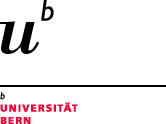Correctly interpreting ECGs
The electrocardiogram (ECG) is of paramount importance in diagnosing heart attacks and cardiac arrhythmia. However, for many students, the reporting and evaluation of the ECG constitutes a great challenge. Understanding waveforms as an expression of physiological and pathophysiological processes is difficult.
As the students’ difficulties in interpreting ECGs differ broadly, it makes sense to teach them as individually as possible. However, in view of the large number of medical students, it is not feasible for specialist physicians to carry out the teaching in small groups. Courses with peers (=fellow students) can provide a remedy to this problem.
Peer-tutored courses are popular
In the final course 2 (6th year of study), an optional ECG course given by peers was offered for the first time in 2017. The peer tutors were trained in advance regarding both didactics and the interpretation of ECGs. The course itself consisted of 2 x 2 hours, in which a total of 16 ECGs were systematically worked through with 2 peer tutors in two groups containing a maximum of 8 participants each. The course was carried out 12 times.
The fact that with over one hundred participants, almost half of the students registered for this optional course demonstrates that the course meets a need. To learn more about the participants’ experiences of the course, we carried out an online follow-up survey. Over 95% of the respondents found the course format ideal. The peer tutors were consistently rated positively by their fellow students, also with respect to their specialist knowledge.
Due to these positive experiences, the course will be offered again next year. It is currently being discussed whether further themes should be offered in the form of peer-tutored courses, such as the interpretation of X-ray images or lab results.

